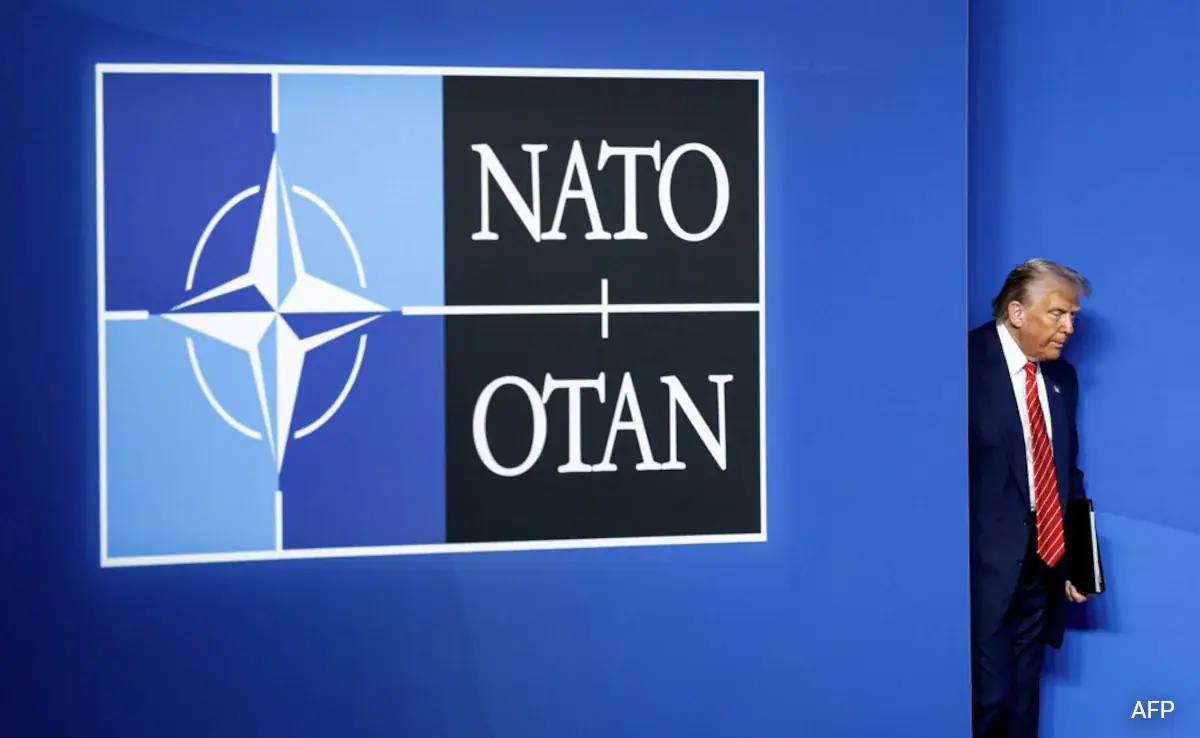NATO just made its biggest defence spending move in decades—and India’s defence industry is ready to cash in. With the alliance committing to ramp military budgets to 5% of GDP by 2035, global defence contracts are about to explode, and Indian firms like HAL, BEL, Paras Defence, and others could be front and center.
At this week’s NATO summit in The Hague, all 32 member countries agreed to a bold new goal: spend more, much more, on defence. That’s not just about boots on the ground. The plan includes everything from fighter jets and cyber shields to satellites, missile systems, and critical infrastructure. And for India—now one of the fastest-growing arms exporters in the world—it could be a breakout moment.
Why NATO’s Decision Matters So Much
Until now, NATO countries were expected to spend 2% of their GDP on defence. That benchmark is out the window. Under the new agreement, member nations will stretch that number to 5% by 2035. The deal will be reviewed in 2029, with several nations pledging immediate increases starting this year.
That kind of spending will create a surge in demand for defence hardware and tech—exactly what India’s homegrown defence companies are now built to supply.

India’s Defence Sector: Ready for the Global Stage
India isn’t just a rising player anymore. It’s already on the map. Hindustan Aeronautics Limited (HAL) has been exporting light aircraft, BEL makes state-of-the-art radar and communication systems, and Paras Defence has carved out a niche in drones, sensors, and advanced optics.
Thanks to “Make in India” and other export-friendly reforms, these companies have gained international credibility. With NATO now looking to diversify suppliers—and manage costs—they’re turning their eyes to India for everything from sensors and electronics to UAVs and missile tech.
Markets React—And Fast
Investors didn’t wait to celebrate the news. Indian defence stocks shot up the day after the NATO announcement:
-
Paras Defence jumped nearly 3%
-
HAL and BEL both gained solid ground
-
Smaller players like Sika Interplant and Astra Microwave saw even bigger boosts, with Sika up nearly 6.5%
The Nifty Defence index climbed more than 1.5% by mid-day, signaling strong investor confidence that international orders could be on the way.
Beyond the Buzz: What This Could Really Mean for India
There’s more here than just rising share prices.
-
Strategic Clout: Supplying NATO members puts India on a new tier of global defence partnerships.
-
Tech Growth: Export demand pushes R&D faster, giving India’s tech ecosystem a lift.
-
Jobs and Industry Growth: As order books grow, factories expand, and skilled jobs follow.
If things unfold as expected, Indian firms may start landing deals for radar upgrades, artillery parts, or even full systems like the Akash missile or BrahMos. Countries across Europe and North America are looking for reliable partners—India fits the bill.
What to Watch Next
Keep an eye on a few big milestones:
-
The 2029 NATO review will show which countries are keeping pace with their spending promises.
-
New export bids are likely in 2025–26, including UAVs, radars, electronic warfare systems, and naval gear.
-
India’s defence budget—already at ₹6.81 lakh crore—could increase further as it pushes to meet global demand and modernize its own military.
And as geopolitical tensions rise globally, NATO’s urgency to strengthen its defences could accelerate these timelines even more.
A New Chapter for Indian Defence Exports
For years, India’s defence sector worked quietly to become competitive. Now, the world is watching—and knocking at the door. With NATO’s commitment to a massive budget expansion, the opportunity is real. For companies like HAL, BEL, Paras Defence and dozens of others, this could be the beginning of their most important decade yet.